An increasing number of Irish artists are engaging with nature in ways that go beyond recording its beauties, whether by travelling to witness fragile ecosystems, collaborating with scientists or creating powerful polemics. It’s a hot topic with a rich pedigree, including the late Barrie Cooke’s surprisingly beautiful paintings of polluted water and Brian Maguire’s views of the imperilled Amazon rainforest in the Clock Winds Down, his most recent exhibition.
Can art works really change our habits? “People are so used to engaging with environmental issues through the news and other media forms,” says Shannon Carroll, the curator of Molecular Revolutions, a group exhibition about how we interact with the natural world that is on show at Dublin’s Lab Gallery. “The overwhelming environmental facts can often leave you with feelings of doom and gloom.”
Art can offer a different way to engage with the subject, opening minds and broadening thinking. “This type of art draws attention to environmental issues while encouraging communication around these concerns, prompting us to reflect on our relationship with the natural environment and all that inhabit it.”
To mark Earth Day tomorrow, here’s how 11 Irish artists are responding to our impact on the world around us.
RM Block
Lisa Fingleton
Interested in finding ways to work locally – rather than travel the world to explore the negative effects of world travel – the artist, film-maker, writer and grower Lisa Fingleton is fascinated by the (ahem) deep-rooted connections between art, food and farming. Based on an organic farm in Co Kerry, she and her partner, Rena Blake, run the Barna Way, an eco-social arts project. “I am interested in slowing down, being more present on our own land and really connecting with nature,” she says. Her work with Creative Ireland and the Irish Museum of Modern Art at last year’s National Ploughing Championships resulted in a huge wall drawing incorporating farmers’ ideas for tackling climate change and her film, created with Dingle farmers, will screen at Crawford Art Gallery in Cork in May. The Barna Way will host a dawn-chorus walk and a drawing-with-nature workshop for the Ballybunion Moya festival on Saturday, April 29th.
School of Looking
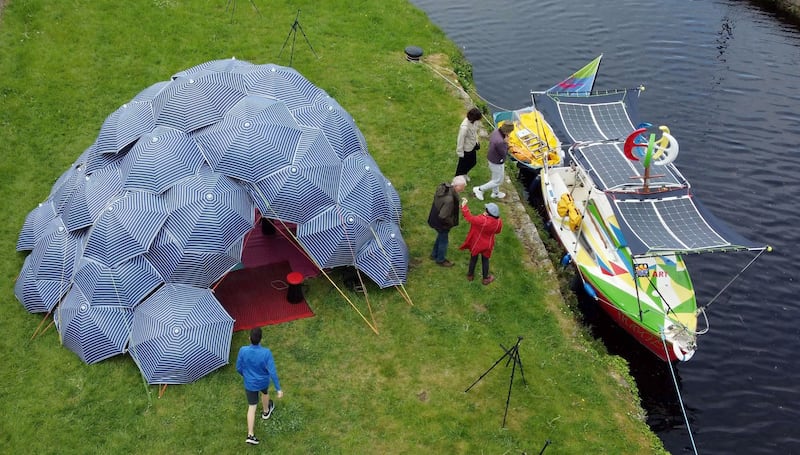
Anne Cleary and Denis Connolly work together under the banner School of Looking. Their eco showboat has been touring Ireland since 2022; the solar-powered Mayfly, described as an ecological floating arts lab, traverses Ireland’s waterways in a zero-carbon fashion. They call in to communities and host pop-up conversations with artists and scientists en route. Earth Day finds the Mayfly at Askeaton, in Co Limerick. The next stop is Custom House Quay in Limerick city on Saturday, April 29th.
John Gerrard
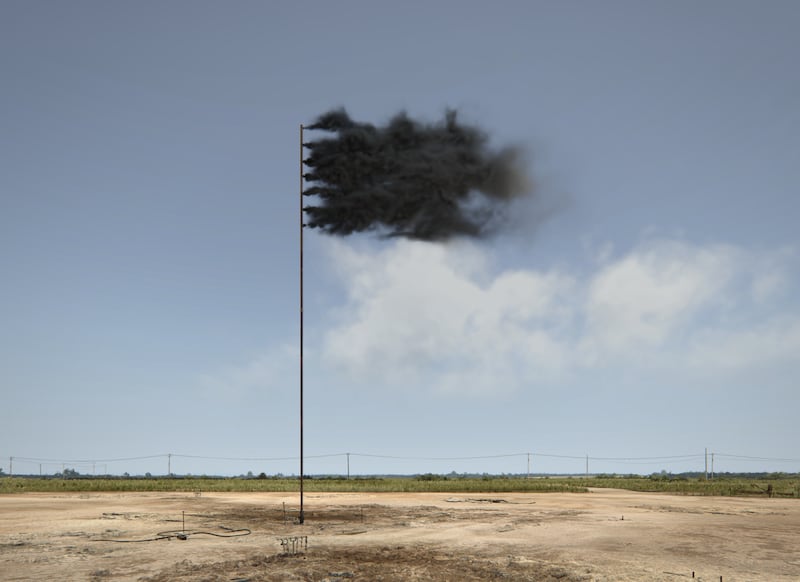
From his Smoke Tree works back in the early 2000s, the Tipperary-born artist John Gerrard has been exploring our negative interactions with the environment by means of his trademark real-time three-dimensional computer simulations. He has turned his keen eye on intensive farming in the United States with his Grown Finish Units and on solar power with the extraordinary Solar Reserve, made in 2014. On Earth Day 2017, Gerrard’s Western Flag appeared in the courtyard of Somerset House in London and simultaneously popped up during the day’s programming on Channel 4. Showing a flag of burning smoke, it was stunning. Visitors to Galway last July will recall his work in a similar vein, Flare [Oceania], burning up at Galway Docks for the city’s international arts festival. He also collaborated with his farming sister, Ailbhe Gerrard, and fellow artist Deirdre O’Mahony for 2022’s Field Exchange project at Brookfield Farm in north Co Tipperary.
Jane Locke
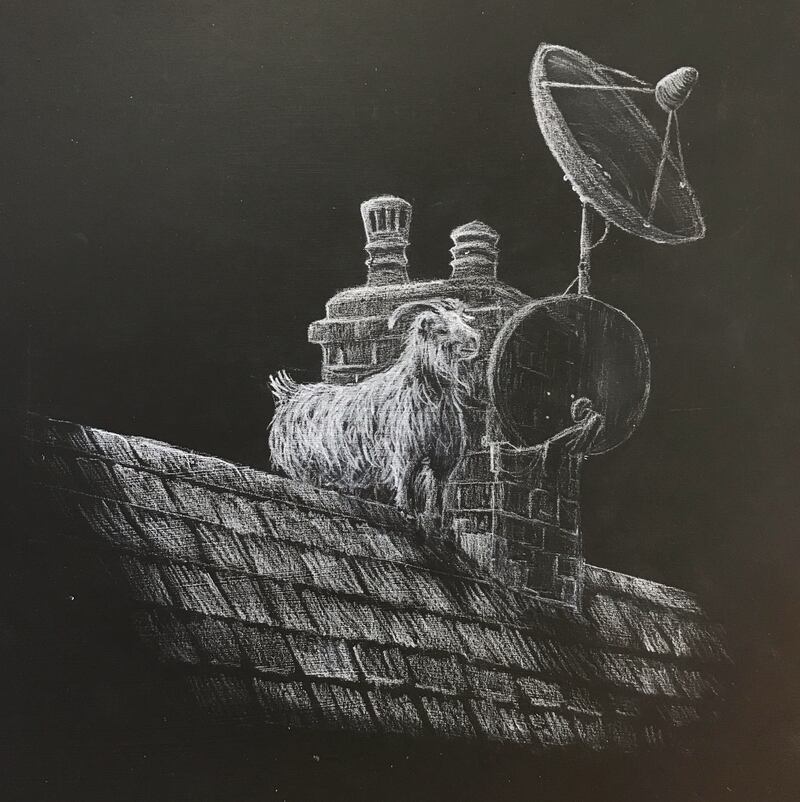
Part of the Growing Enquiry exhibition at the RHA in 2022, which explored how art interacts with agriculture, Jane Locke’s Consumer Farmer provided plenty of food for thought. The Dublin-born artist has degrees in both visual-arts practice and analytical science and a background in pharmacy. Her installation invited us to imagine the year 2123, by when, in Locke’s brilliant imagination, food production has not only been commodified and individualised but also catastrophised. So welcome to the world of personal geodesic domes, deluxe roof goats and roosters bred to hum the national anthem.
Mark Clare
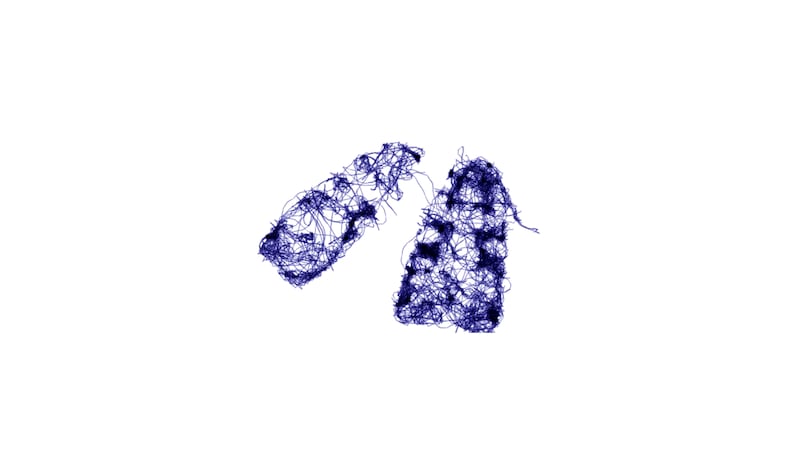
According to Mark Clare, “since the founding of the Irish Free State, the island of Ireland has officially lost 26 insect species”. Through collaborative and personal projects, Clare aims to draw attention to what we have lost and what we will lose if we don’t take more care. Eidolons (currently on show at the Lab Gallery, as part of Molecular Revolutions) uses AI animation software to create imperfect drawings of lost species. “The issue we face as a State is that future generations will have nothing to compare these drawings to, and, as such, they will be lost from the collective imagination forever,” Clare says.
[ Reimagining the school run for a sustainable futureOpens in new window ]
Siobhán McDonald
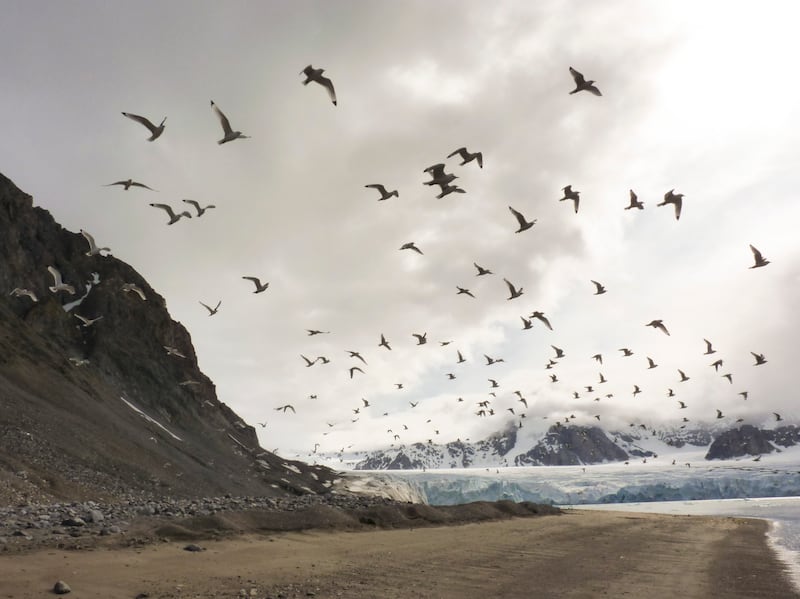
Working collaboratively with the European Space Agency and the European Commission’s Joint Research Centre, among other organisations, and currently artist-in-residence at the school of natural sciences at Trinity College Dublin, Siobhán McDonald weaves scientific knowledge into her work. The results are beguilingly beautiful, but look beyond the surface gorgeousness to see the lurking environmental catastrophe. At the Edge of Visibility, a film from 2016 that is currently showing on Living Canvas at Wilton Park in Dublin, is a haunting exploration of how Arctic ice holds memories of life dating back millions of years and how, today, the sun is affecting this uncompromising yet fragile place.
Felicity Clear
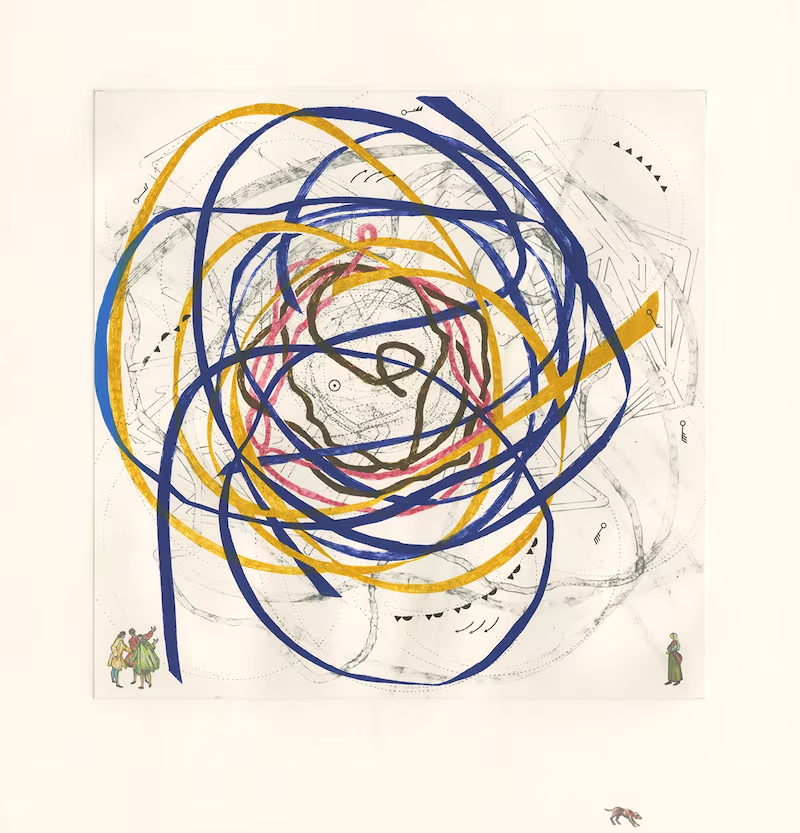
From works on paper to large installations, the work of the Dublin-born artist Felicity Clear has increasingly drawn out environmental concerns. Having studied weather and climate at University College Dublin, she puts natural systems to the fore – including recently at Leitrim Sculpture Centre, where she placed a weather station on its roof, making drawings of wind speed for the duration of her residency there. Clear’s Looming Concerns intaglio prints, made with Stoney Road Press, link discarded urban detritus and building materials with weather mapping and maps with the history of the grand tour, the 17th-century precursor to mass tourism. “In the prints, the drawings are almost becoming a vortex of bits and pieces, including weather symbols, and there is a reference to generalised, internalised worry about what is coming ahead,” the artist says.
Fiona McDonald
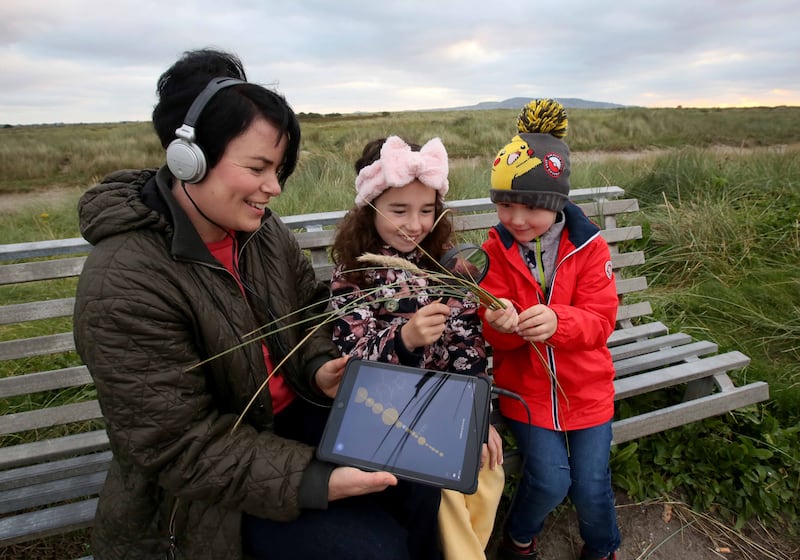
Where artists cross over with scientists, they tend to bring a new perspective, adding layers to inquiries that can open ways in for us all. After studying biological chemistry at the University of Ulster, fine art at the National College of Art and Design and multimedia systems at Trinity College Dublin, Fiona McDonald brings a great deal of knowledge to bear. Working at the RHA Studios, and with researchers from the National Parks & Wildlife Service, she is examining greenhouse gas emanating from peatland restoration sites, using equipment that witnesses the ecosystem breathing. Another recent project, Sensing Ecologies, created for Bull Island in Dublin, included a geolocated audio smartphone app that responds both to man-made sensors and to the plants and animals that do the job naturally. “The ‘big data’ revolution provides evidence that climate change is breaking the earth’s beat; and how the original sensor in evolutionary biology and ecology, the human observer, still plays an essential role in validating this data,” McDonald says.
Rosie O’Reilly
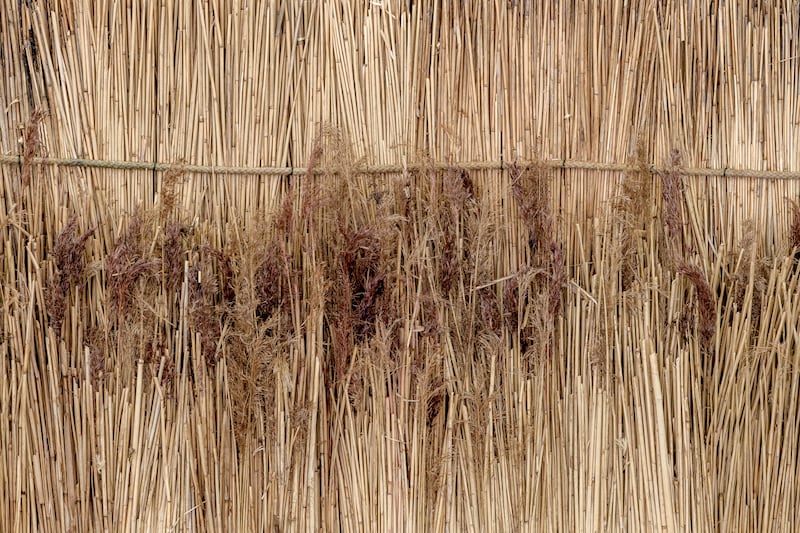
Another artist to work in the fascinating space where art and science meet, Rosie O’Reilly believes that science and technology must come to terms with more ancient knowledge to tackle the precariousness of life under climate change. Her 2022 show, Idirlinn: Shifting Silence, mingled information from UCD’s CCAT wetland research and from Cambridge University with the traditional skills of reed building and elements of Irish mythology. Another project, 4/704, sited dye vats in Dublin Bay to track the impact of rising sea levels, creating clothes that literally marked the changes in our oceans.
Mark Redden
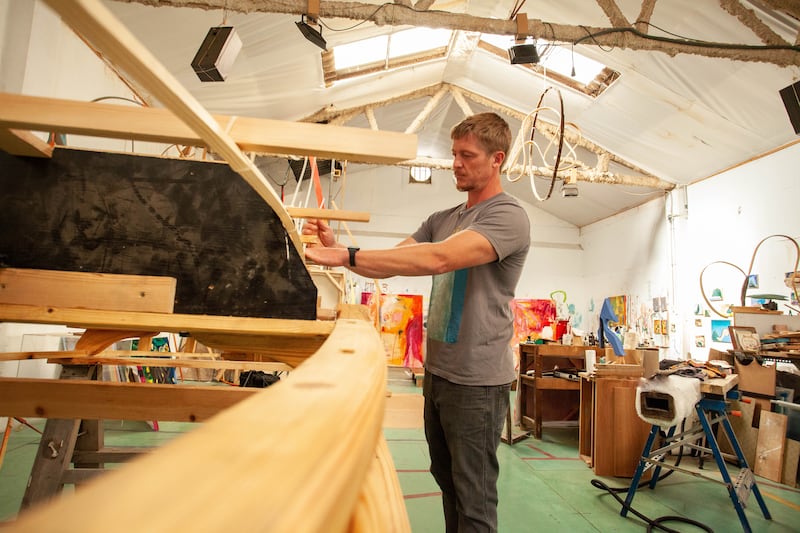
In 2012 the artist and currachmaker Mark Redden collaborated with Rosie O’Reilly (see above) to build two currachs with Dublin community groups, having honed his skills with Meitheal Mara in Cork. Now the pair are using a beautiful two-hand currach, An Trá Ban, discovered in Co Mayo, as a template for a brand new boat. Made with traditional techniques such as hazel-rod ribbing and rope tying, An Mór Ríoghain (the Great Queen) connects to ideas of reuse and repair. It also reminds us that communities hold a wealth of still-vital knowledge and that the past offers us plenty to keep us going into an uncertain future. You can see the build in progress at Tøn Gallery, in Temple Bar in Dublin, until Thursday, April 27th. An Mór Ríoghain will launch, weather permitting, on Saturday, April 29th.
Molecular Revolutions, featuring work by Bassam Al-Sabah, Mark Clare, Clodagh Emoe, Jennifer Mehigan, Erin Redmond, Rosie O’Reilly and Trevor Woods, runs at the Lab Gallery, Foley Street, Dublin 1, until Saturday, May 27th



















